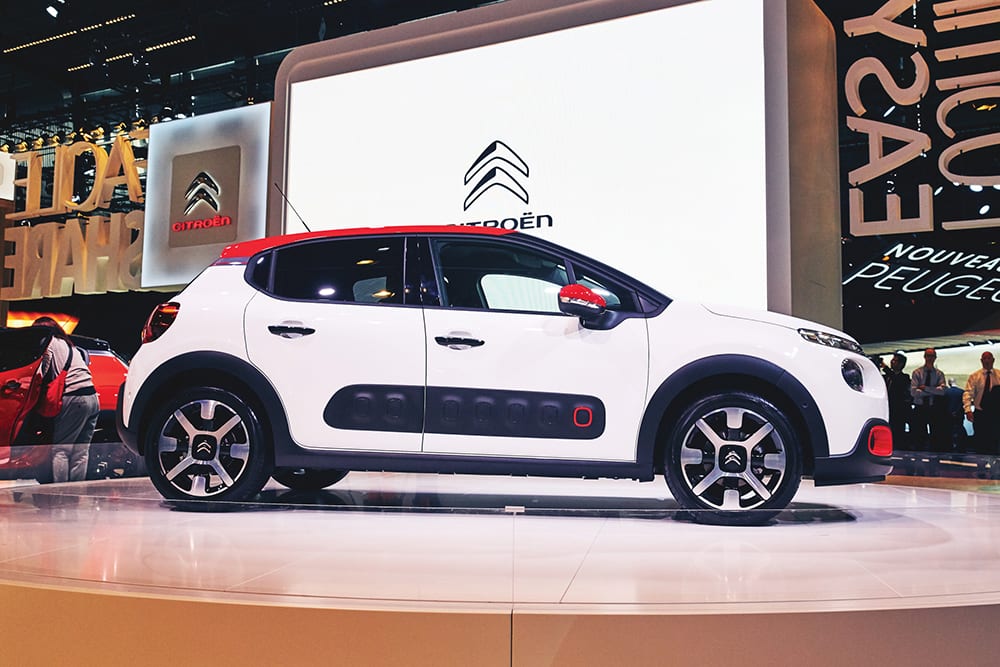By Cynthia Challener, CoatingsTech Contributing Writer
The automotive industry is undergoing a significant transformation. Conventional internal combustion engines (ICEs) are being replaced by batteries in electric vehicles (EVs), and drivers will ultimately become passengers in autonomous vehicles (AVs). Coatings have an important role to play in making these new technologies possible. Beyond their traditional jobs of protecting automobile components from corrosion, abrasion, and ultraviolet (UV) degradation and providing a unique and striking appearance, automotive coatings are already providing additional functionality. This includes soft-touch and sound-dampening interior surfaces and self-healing and easy-to-clean exterior surfaces. Additional performance capabilities are being achieved on a continual basis, with some technologies adopted from other industrial applications and others developed specifically to meet the needs of the evolving automotive sector.
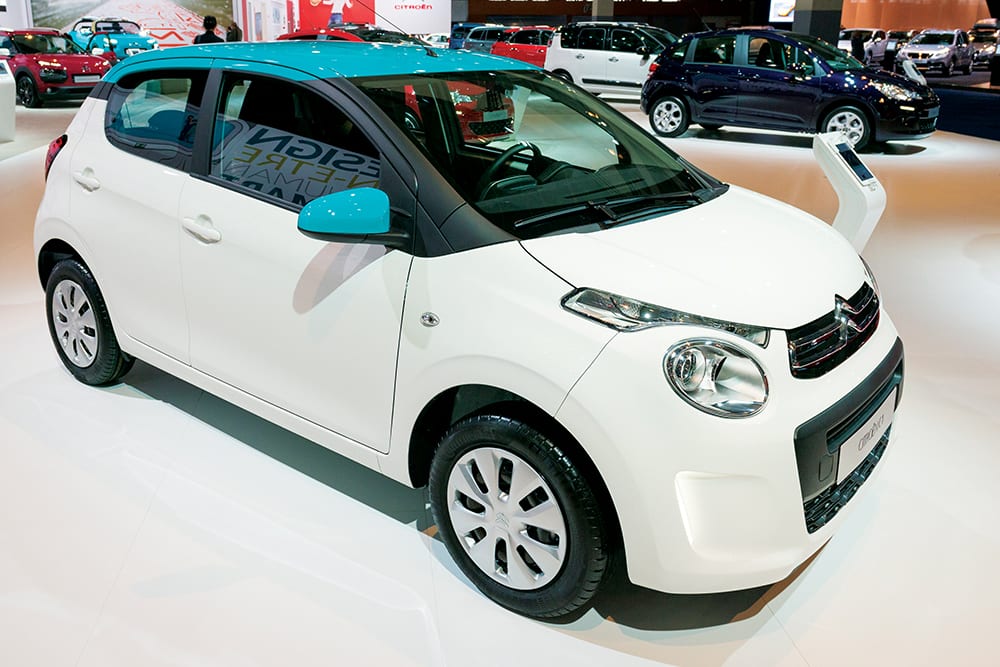
The future of the automotive industry will be heavily dependent on electric and hybrid vehicles, as well as autonomous vehicles, according to Christopher M. Seubert, research engineer in the Paint and Coatings Research group at the Ford Research and Innovation Center. “As we look at the current industry transformation, the focus is on CASE solutions—connected, autonomous, shared, and electrified,” adds Peter Votruba-Drzal, global technical director for PPG. As companies explore connected and autonomous vehicles and new, alternative powertrains, coatings need to be adapted to meet these needs, asserts David Cranfill, BASF technical director for OEMs.
Energy Conservation Crucial for Electric/Hybrid Vehicles
Electric and hybrid vehicles are already here today and are expected to represent an increasingly large proportion of the global fleet going forward. Hybrid and EVs, however, carry a higher price tag than ICE vehicles. To make the case for EVs and hybrids more compelling to consumers, car makers are focused on maximizing range and fuel efficiency. As such, Seubert notes that energy conservation is very important, and the cooling of a hot vehicle using air conditioning is a very energy-intensive process. In addition to contributing personality and style, coatings, when applied to EVs and hybrids, will help handle the heat management requirements around batteries and electric motors, according to Cranfill. “External coatings with infrared-reflective pigments will keep the cabin cooler to reduce the need for extra energy to power air conditioning. That lets the electric car go farther on a single charge,” he says. Of particular interest are darker pigments that can increase the total solar reflectivity (TSR) of the exterior paint system, such as those that can provide black jetness similar to that achieved from standard carbon black pigments, adds Seubert.
We expect automakers to ask for more deeply saturated colors to help them claim their place in the market.
Development of advanced reflective coatings must, in fact, be achieved while meeting consumer expectations for color and overall appearance. Carmakers follow color trends very closely, looking to industries such as fashion and interior design to determine the options that should be developed, explains Paul Czornij, BASF design manager in charge of colors and trends. “Each year, BASF creates 65 novel and innovative designs to capture color trends that may be seen on the road three to five model years in the future. We expect automakers to ask for more deeply saturated colors—like rich blues—to help them claim their place in the market. Developments in pigments and dispersions are making those new chromatic colors possible. In addition, BASF sees the flip-flop color travel in metallic shades to be more eye-catching, playful, and evocative. A car’s character lines and body style become even more expressive with these colors,” he says.
There are somewhere on the order of two to four times the coating opportunities in EVs compared to conventional combustion engine vehicles.
Under the hood of these electric and hybrid vehicles are other opportunities for the coatings industry, according to Michael T. Venturini, marketing director for Coatings at Sun Chemical. Three examples include thermally conductive coatings, fluids for battery pack control, and coatings that insulate the yards of wires and cables required in these cars. “We believe that there are somewhere on the order of two to four times the coating opportunities in EVs compared to conventional combustion engine vehicles,” agrees Votruba-Drzal. New coatings, adhesives, and sealants will be needed to provide functional performance in the powertrain, such as dielectric coatings that provide electrical resistance and thermal conductivity, and to ensure long-term battery cycle performance. Thermal control systems that help moderate the temperature at the interfaces between the battery systems and battery management system rely on coating and adhesive technologies as well. The need to seal and protect battery packs provides opportunities for fire protection materials, too. For this solution, PPG is leveraging expertise developed in its protective and marine coatings business, including passive fire protection (intumescent) coating technology.
Several sustainability trends continue to drive market innovation, including low-temperature cure and integrated processes to compress the paint shop footprint and reduce energy usage.
Coatings that protect against electromagnetic interference are needed to shield electronics used in vehicle communication systems from the large magnetic field generated by vehicle battery packs, according to Votruba-Drzal. Positive temperature coefficient coatings, meanwhile, offer creative solutions when there is no large heat source available from an internal combustion engine. These coatings can be deposited in a pattern on surfaces, such as seats, door panels, and floors, enabling localized heat when a current is applied. Thermoelectric coatings, meanwhile, take advantage of temperature differences generated all over electric cars, from the sun on the vehicle panels, inside the cabin, to motor parts and electrical batteries—and can generate electric current. “While flexible thermoelectric materials and coatings are at their early stages, if these coatings are low-cost, there could be an opportunity to use them to generate an electrical current for the vehicle,” Venturini explains. 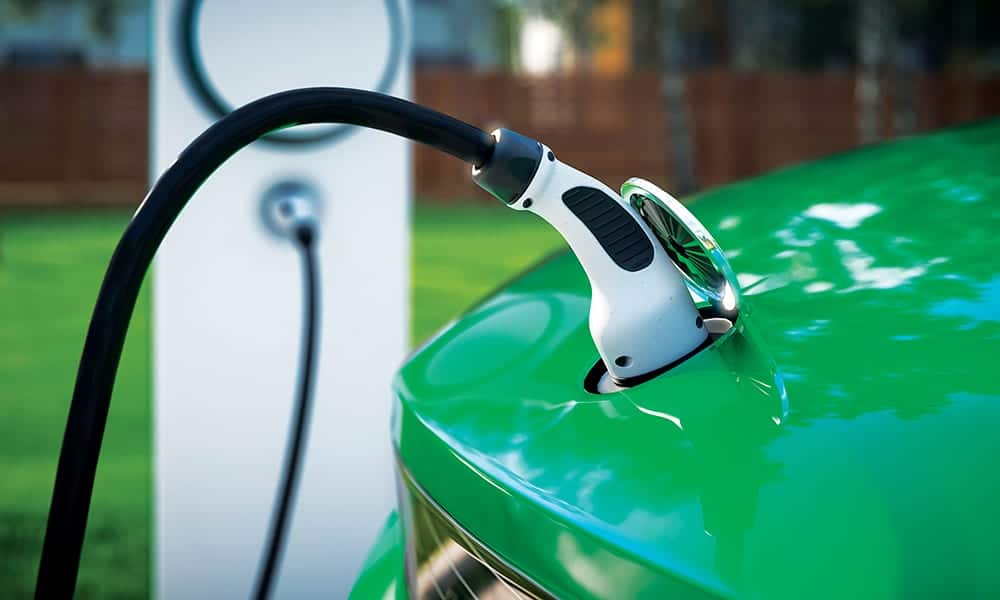
Coating manufacturers are also challenged by the use of thick metal sections in EVs and hybrids to not only support the heavy battery systems but also to protect them from collision. These sections have significant thermal mass, and it takes a lot of energy and time in the oven to heat these sections to traditional cure temperatures (140°C). Formulators are actively developing coatings that cure at lower temperatures, allowing the use of existing oven configurations while reducing energy consumption and CO2 emissions, and increasing efficiency and productivity, according to Votruba-Drzal. “With these new coating systems, it is possible to use existing wet-on-wet and other compact approaches,” he comments.
Mixed Substrates Are Becoming the Norm
Lightweighting of EV and hybrid structural components is another approach to energy conservation. Many new and dissimilar materials are being used to assemble these vehicles to allow for the incorporation of heavy battery packs. All newer vehicles, regardless of the powertrain, are, in fact, being constructed of lighter-weight materials to achieve better fuel economy. The goal, according to Todd Coggins, technical manager Surface Treatment Processes—Metal Pretreatment with Henkel Corporation, is to reduce car weights by 10% and to drive efficiency improvements of five to eight percent. The use of lighter-weight metals and various types of composites is increasing dramatically. “Dissimilar metals and composites cannot be joined using traditional spot welding; however, structural bonding and reinforcement, as well as noise vibration reduction, must be achieved using novel adhesives and sealants,” Votruba-Drzal observes.
Coating systems must also now be formulated with the ability to adhere to these very different substrates—as well as provide solar reflectivity, corrosion protection, and the desired appearance—at the same time as these systems are becoming thinner and designed with fewer layers. “As automakers change their products, coatings will have to adapt,” asserts Sean McKeon, BASF vice president of Global Key Account Management. “New coatings will need to resist corrosion more than ever, while reducing overall waste and cost,” he adds. There is also a desire to reduce the temperature required to cure exterior coating systems used on these vehicles, because many of the new substrates cannot survive the current cure temperatures. BASF, for instance, has developed coating systems with reduced cure requirements that allow the OEMs to utilize one paint system to paint the entire mixed-substrate vehicle,” McKeon says.
Surface treatment coatings are also very important for newer vehicles manufactured using more lightweight metals. Three types of lightweight coating pretreatments are available, according to Coggins: electro-ceramic coatings, zirconium coatings, and titanium bases. “Battery-heavy and electric vehicle coatings require the lightweighting that aluminum and magnesium offer while still benefiting from corrosion protection and the excellent base they establish for adhesives and paints,” he says. He notes that the biggest challenge that these coatings must overcome is the inconsistent surface cleaning and de-oxidizing observed for the different lightweight metals used today. “A key focus at Henkel, therefore, is the development of coating technologies that keep pushing the boundaries of providing uniform surfaces prior to coating,” Coggins notes. He also says that Henkel is consistently investigating new additives for performance and durability leveraging various sustainable sources.
One example of a new offering is the company’s electro-ceramic coatings, which are produced using a patented plasma deposition process. To date, zirconium coatings and titanium bases have experienced the widest adoption because they have been around the longest, are the least expensive to use, and the production part approval process is available online, according to Therese Niemi, technical manager Surface Treatment Processes—Light Metal Pretreatment with Henkel Corporation. Electro-ceramic coating, she says, offers outstanding features of corrosion protection, friction reduction, heat resistance, and it provides an excellent base for paint, adhesives, and coatings. It is designed specifically to be applied to aluminum, magnesium, and titanium.
Sensor Challenges for Autonomous Vehicles
It is expected that AVs will be used 24 hours a day, 7 days a week, unless repairs or maintenance are needed, to haul both people and products/goods, according to Seubert. “At this usage rate, the realistic lifetime of these vehicles is three to five years,” he notes.
While AVs are further out on the development timeline, they have their own set of coatings challenges, most notably related to supporting the uninterrupted transfer of data between the computer driver, sensors, and the communication system. Three main types of sensors are employed on AVs: cameras, light detection and ranging (LIDAR), and radio detection and ranging (RADAR) systems. “Coatings will have to reflect LIDAR, not interfere with RADAR, and interact seamlessly with various autonomous sensors, adding to the reliability of the entire transportation ecosystem,” says Cranfill. When selecting a pigment for AVs, therefore, the reflective signature of the pigment in relationship to the wavelengths being used by the detectors is important. “It is necessary to understand these parameters. Finding the right balance of coating reflectivity, transparency, and absorption, and how they each affect signal strength will be an area of ongoing material research,” states Venturini. This need is driving innovation within the industry to formulate coatings that are compatible with the sensors, but stay within the desired color space, according to Cranfill.
The use of lighter-weight metals and
various types of composites is increasing dramatically. . . . the biggest challenge that these coatings must overcome is the inconsistent surface cleaning and de-oxidizing observed for the different lightweight metals used today.
The lenses themselves for cameras and LIDAR units must be kept sufficiently clean and transparent to collect needed data. While these lenses are often glass, they can be made of polycarbonate or other optically suitable substrates. “Coatings are required for camera and LIDAR lenses that not only resist the deposition of dirt, but also facilitate the easy removal of that dirt via air or cleaning fluid spray,” Seubert observes. “While easy-clean coatings exist, most are used in applications with minimal outdoor exposure, and many of the coatings that have been examined at this time do not have the ability to retain their hydrophobic and transmissive properties (anti-reflectivity and optical clarity) for even just three years in service,” he adds. Coatings for LIDAR lenses must also have a very uniform thickness to prevent any scattering or refraction of the sensor beams, according to Seubert. PPG is leveraging technologies developed for its other business units, most notably industrial and aerospace applications. “We are developing anti-glare, anti-scratch, and easy-to-clean systems that enable optical sensors on AVs to remain operating with high visibility, even in challenging environments, including snow, sleet, rain, and bug buildup,” Votruba-Drzal says.
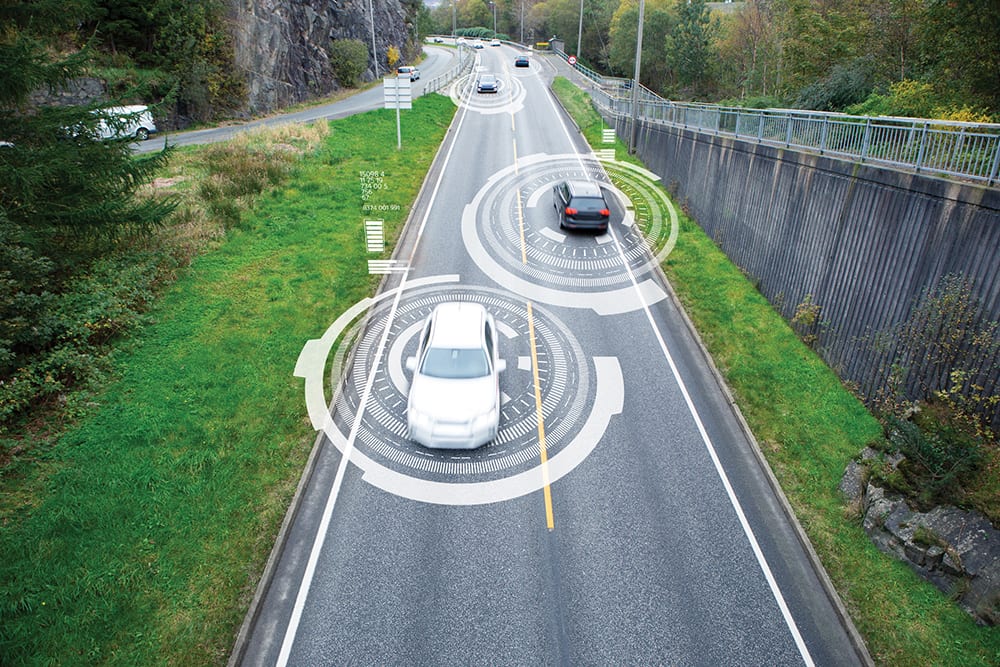
Laser-based LIDAR units are also affected by the reflectivity of the substrates they are intended to detect. Darker colors absorb the wavelength (905 nm) commonly used for these systems, making these objects difficult for the LIDAR to “see,” while silver coatings have a high reflective signal. To increase visibility, therefore, coating manufacturers are turning to near-infrared reflective (NIR) technology initially developed for the aerospace and building industries. These coatings keep airplanes cool when parked at the gate to reduce fuel demand. “In LIDAR applications, incorporation of NIR pigments into coatings can dramatically increase the reflectivity of dark colors, even to the point where black reflects similarly to white,” observes Votruba-Drzal. He also comments that the enhanced reflectivity of the vehicle improves the reliability of LIDAR sensors in inclement weather and challenging light conditions.
BASF, for instance, has developed Centripetal Blue, a blue-black color with a medium-coarse sparkle that addresses NIR reflectivity challenges, according to Czornij. The pigment technology is used in the company’s LIDAR-detectable coatings, which include a LIDAR-reflective layer that reflects NIR radiation back to its point of origin for calculation of distance and mapping of the environment
RADAR sensors do not present the same cleanliness/clarity issues that LIDAR units and cameras do. There is, however, a push to locate them behind solid parts, such as bumper fascia, to hide them from view. These locations, however, require the radio waves to pass through the fascia substrate, as well as the front paint system. Even so, it is imperative that the single intensity of the emitted and returned signal does not attenuate so much that detection distance or fidelity is compromised, according to Seubert. “Bumper fascia and coatings must, therefore, be formulated and applied such that the RADAR signal does not significantly diminish during operation,” he explains. Metallic pigments in the basecoat are the greatest concern, because they can cause significant attenuation, and thus currently OEMs are limiting the quantities of aluminum and other metallic flakes contained within paint systems used on AVs, Seubert notes.
Coating systems must also now be formulated with the ability to adhere to these very different substrates—as well as provide solar reflectivity, corrosion protection, and the desired appearance.
Ultimately, the biggest challenge to developing coating technologies for autonomous vehicles is the fact that the performance targets are still unknown for both the sensors themselves and the coatings used on them, according to Seubert. “Both technology and design continue to change, and the coatings used on these sensors must also adapt to those changes. In addition, the government has yet to decide what, if any, requirements and restrictions to implement on AVs and the sensors/materials used. Without industry-wide or governmental requirements, each AV manufacturer will continue to develop their AV platforms to the best of their abilities,” he explains.
Connected and Shared Opportunities
In the connected vehicle space, PPG has observed an exponential increase in the number of antennas and communication inputs to vehicles. There is growing interest, notes Votruba-Drzal, in the use of conductive coatings to form patterns that serve as RFID antennas. “Using conductive inks and coatings makes it possible to print an antenna into the configuration of the car,” he notes. Venturini stresses, again, that for antennas and sensors placed behind body panels, the coatings cannot have obstructive properties that could interfere with the antenna/sensor technology. “For instance,” he notes, “metallic effect pigments may interfere with certain wavelengths, while pearlescent pigments are less obstructive. The former may, therefore, find higher usage in vehicle coloration as vehicle-to-vehicle communication becomes more widespread.”
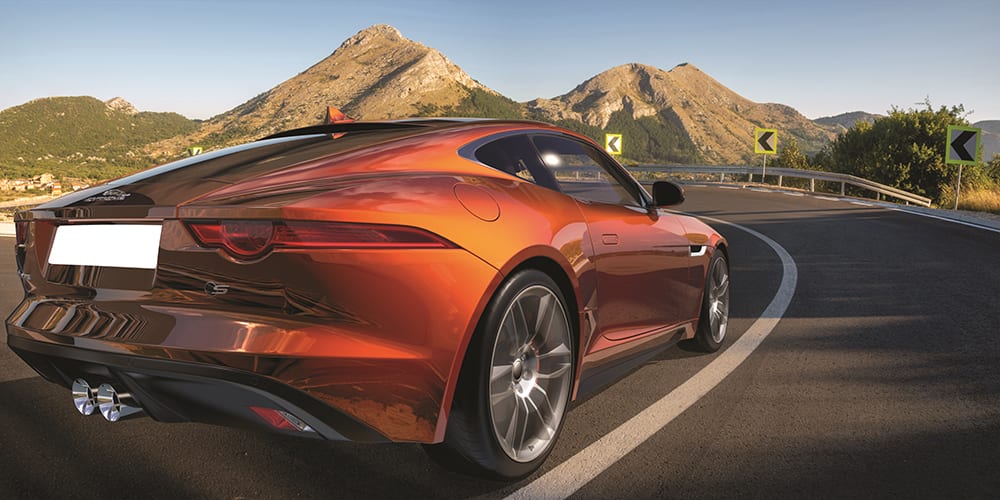
Shared riding—and semiautonomous and autonomous vehicles as well—will affect coatings used in vehicle interiors. The focus in these cases will be less about the driver experience and more about the passenger experience, according to Votruba-Drzal. A host of coating opportunities are emerging as a result. “Much larger touch screens for vehicle displays and the coatings used on personal consumer electronic products—anti-glare, anti-scratch, anti-fingerprint—will need to be translated to vehicles. There will also be more functional surfaces within car interiors that will require tactile coatings that impart tactile functionalities, such as soft-touch or low-friction slippery-feel surfaces. Many surfaces—think shiny dark dashboards—could also benefit from self-cleaning and/or anti-fingerprint coating technologies. Electronics embedded into the interior structure of the vehicle that are touch-enabled will also play a big role in future vehicles,” he explains.
In LIDAR applications, incorporation of NIR pigments into coatings can dramatically increase the reflectivity of dark colors,
even to the point where black reflects similarly to white. . . . The enhanced reflectivity of the vehicle improves the reliability of LIDAR sensors in inclement weather and challenging light conditions.
Liquid-applied sound damping (LASD) and liquid-applied sound barrier (LASB) technologies are also emerging as major trends in the automotive industry as alternatives to traditional methods used to both protect components from damage and premature wear and to lessen unwanted noise experienced by drivers and passengers inside the cabin, according to Akbar Hussaini, technical specialist for LASD and NVH Coatings at BASF. “Traditional methods are often unwieldy and time-consuming to install, requiring the use of heavy pads or foams, and LASD/LASB methods have proven to help automakers dramatically reduce weight, labor, and material costs,” he observes. While the two technologies are applied by a similar spray technique and provide similar benefits, they have distinct properties that make them ideal for use in different parts of the vehicle. LASD is used primarily in vibration damping, which isolates structural noise (low frequency, usually 0–1000 Hz), and occasionally in barrier treatment. LASB is used primarily in barrier treatment, to block the transmission of airborne noise (higher frequency, 1000+ Hz), and occasionally in sound absorption. “Therefore,” Hussaini says, “LASD technology is applied to metal parts as an alternative to traditional asphaltic or butyl die cut pads on the bottom of the vehicle, while LASB technology is designed for nonmetal surfaces like PET or shoddy fiber found behind the instrument panel.” LASD and LASB technologies can also provide some benefits in lightweighting, as traditional methods have limitations in film thickness.
LASD and LASB technologies are examples of the BASF strategy to move beyond paint to the entire spectrum of surface solutions. “We treat various types of surfaces that require specific properties: we color them, we protect them, and we make them functional,” says McKeon. “Functional coatings will be an important enabler as the industry adopts driver assist and autonomous driving technologies,” he predicts. There is, in fact, adds Seubert, always a desire for coatings to do more than just “look good.” Ultimately, however, “when it comes to any new coating technology, durability and cost are the biggest challenges to implementation. The coatings used on standard vehicles must last 10 years in service, which is not a trivial performance target to meet,” he adds.
Growing Popularity of Contrast-Color Canopies
Two-tone styling has become increasingly popular and has moved from side panels and striping to vehicle rooftops. The latest trend in car styling is contrast-color canopies in which the roof of the car is a different color than the body. “This design trend has taken off quickly. There is always a push to differentiate the look of vehicles, and contrast-color canopies is one of the latest ways to achieve that goal,” Seubert says. It poses application problems, however. Painting the roof or canopy a different color is not easy. It typically requires the vehicle to be sent through the topcoat process twice, with significant masking labor needed to paint just the roof. The result, notes Votruba-Drzal, is reduction of production capacity.
Much larger touch screens for vehicle displays and the coatings used on personal consumer electronic products—
anti-glare, anti-scratch, anti-fingerprint—will need to be translated to vehicles.
“One potential solution is to use paint replacement films on the roof, but this process is very time-intensive and cannot be used for high-volume applications. Ultimately, I don’t think material changes to the coatings alone can help. New automation to either allow precise color and paint application or to accelerate the masking process is what is really needed to help implement this design at high volumes,” Seubert says. Indeed, Votruba-Drzal notes that a number of OEMs are working to increase the transfer efficiency process for application of the contrast color on a horizontal surface. Toyota, for instance, presented a new bell atomization technology at an industry conference in 2019 that is reported to allow for much more locally controlled delivery of the paint and an increase in the transfer efficiency to greater than 95%.1 “There is a recognition by paint shops that the use of robotics that can apply paint with high precision, [which] should make it possible to perform two-tone applications inline, and dramatically increase throughput,” Votruba-Drzal says. He adds that there is an environmental benefit as well, because more efficient delivery of paint dramatically reduces the amount of energy required, not only for atomization, but also for overspray collection.
Sustainability Continues to Be at the Forefront
Several sustainability trends continue to drive market innovation, including low-temperature cure and integrated processes to compress the paint shop footprint and reduce energy usage, according to Cranfill. Governments around the world also continue to establish new standards for lower VOCs. “There is always a push to make the paint process more environmentally friendly, be it through new materials (low-temperature cure), different curing technologies (UV/EB), new automation, or new sources of resins and solvents,” adds Seubert. Any new technology, though, must meet durability requirements and have an acceptable cost of implementation.

In fact, the need to satisfy longer ownerships will increase the length of warranties, according to Venturini. “We are already seeing warranties significantly increase from even just a few years ago. This is simply because engines are lasting longer, and part design has gotten better. Electric vehicles are going to continue to push that with extreme longevity as electric motors don’t wear out as quickly as internal combustion engines and transmissions,” he says. Coating technologies will continue to advance as well, he adds. “Anti-corrosion and protective technologies that are both lightweight and environmentally friendly, such as waterborne, powder technologies, and heavy-metal-free alternatives, are the strongest areas for future development. Interior coatings for seating and touch points are also being influenced by longer ownerships and even the shared vehicle economy. “With coatings being applied in more complicated painting processes and layers, while meeting the criteria of the autonomous vehicles, connected vehicles, and longer-life vehicles, the worlds of pigments and resins are now overlapping more than ever. The combination of the two is what will drive development and innovation through the next decade,” Venturini asserts.
Many Design Concepts
That overlap is reflected in BASF’s most recent trend predictions, which Czornij says aim to visually relate to the new technology focus in the automotive market and reflect responsibility for the environment. “New coatings containing materials from renewable resources while minimizing environmental impact and carbon footprint will help automakers connect with this part of their consumer base,” he says. PPG is energized by the opportunity to leverage specialized coating technologies developed for other businesses in the automotive market. “What is most exciting is that concepts are evolving very rapidly, with new groups within the OEM trying to understand what they need to create brand recognition and value in the future as the industry moves away from the size and power of the engine as the defining factor to autonomous, connected, electrified vehicles,” Votruba-Drzal says.
In fact, the greatest difficulty may be the large number of possible design concepts. “With so many opportunities, it is essential to understand the risks associated with each in order to determine which ones to focus on,” he concludes. Clearly, it is a challenge the coatings industry welcomes.
Reference
1. SURCAR, June 2019, Cannes, France.
CoatingsTech | Vol. 17, No. 4 | April 2020
